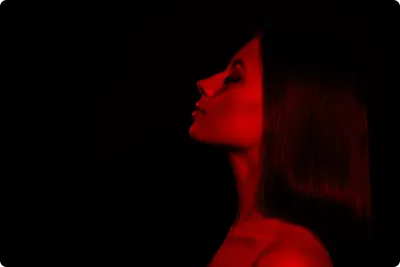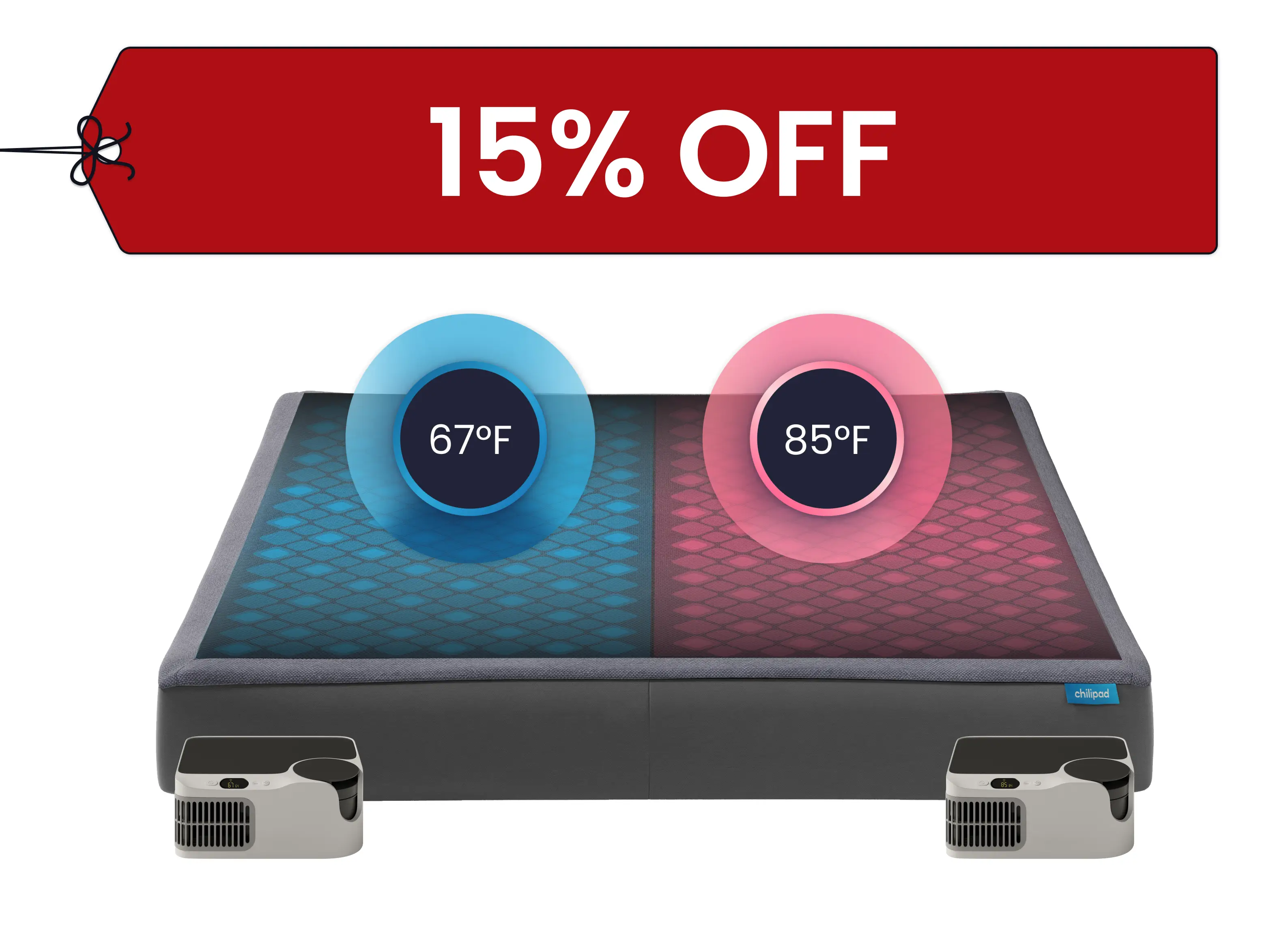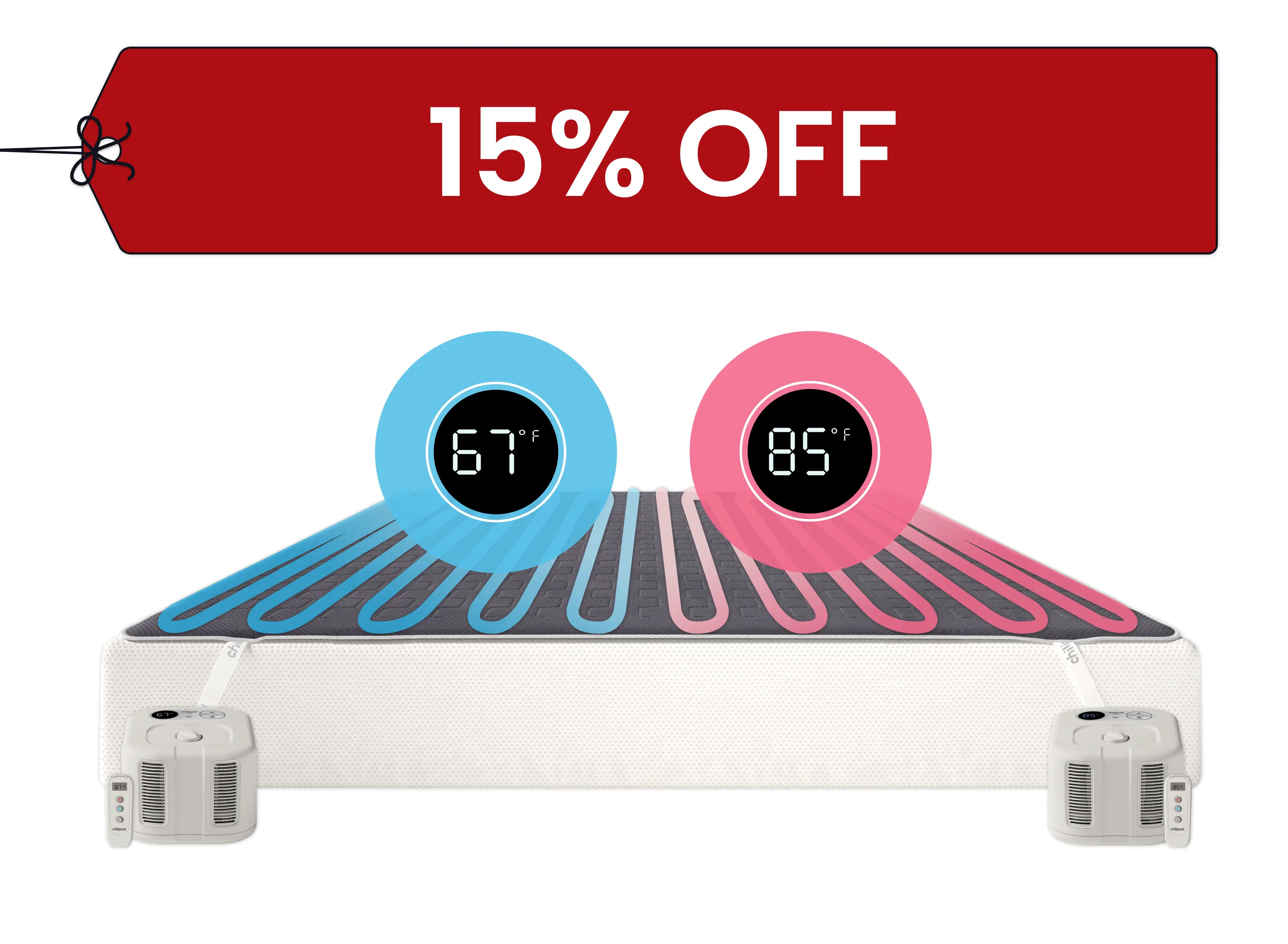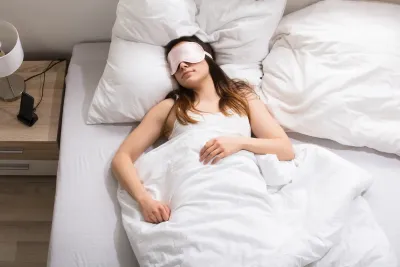
Key Takeaways
- Supports Natural Sleep Processes: Uses specific wavelengths (600–650 nm) to support melatonin production and promote restful sleep, helping the body wind down without the sleep-disrupting effects of blue light.
- Studies Indicate Improved Sleep: Research, including scientific studies on athletes, shows this therapy can improve sleep by boosting melatonin levels. Participants reported falling asleep faster and enjoying longer, uninterrupted sleep.
- Additional Health Benefits: Red light therapy has been linked to other benefits, such as reducing stress and anxiety, alleviating seasonal affective disorder (SAD), and even easing chronic pain.
- Easy Integration into Nightly Routines: Using red light therapy 30 minutes to an hour before bedtime can enhance relaxation and prepare the body for sleep. Red-tinted lighting solutions and therapy devices provide non-invasive ways to incorporate red light exposure into a nightly routine.
Sleep is a vital component of overall health, yet many individuals struggle to achieve restful slumber. As research continues exploring innovative sleep enhancement solutions, red light therapy (RLT) has emerged as a promising option.
Red light therapy taps into low-wavelength red light to help optimize restful sleep and sync your circadian rhythm. Knowing how it works—and how to work it into your nightly routine—could be your next sleep upgrade.
Upgrade Your Sleep. Unlock Deeper Recovery with Chilipad
Enhance your recovery and optimize your sleep with Chilipad. By actively cooling your body, Chilipad helps you achieve deeper, more restorative sleep—so you wake up feeling refreshed and ready to perform at your best.
What is Red Light Therapy?
Red light therapy involves exposure to specific wavelengths of red light, typically between 600 to 650 nanometers. This therapy is believed to stimulate cellular processes, including the production of melatonin, the hormone responsible for regulating sleep-wake cycles.
Unlike blue light, which can inhibit melatonin production and disrupt sleep, red light is less likely to interfere with the body's natural rhythms.
Study: In a small-scale study, it was found that red light therapy could potentially enhance sleep quality and reduce next-day drowsiness. [1] Participants reported improvements in how quickly they fell asleep and the duration of sleep they experienced.
Understanding Red Light and Near-Infrared Light
Red light and near-infrared (NIR) light both play important roles in light therapy, but they penetrate at different depths. Red light—the kind you can actually see—works on the surface of your skin. It helps boost collagen, even out skin tone, and support faster healing.
Red light typically falls within the visible light spectrum, with wavelengths ranging from approximately 620 to 750 nanometers (nm).
NIR light works behind the scenes. Unlike Red Light, it’s invisible to the eye and dives deeper into muscles and joints. By doing so it helps with recovery, reducing inflammation, and supporting your body at the cellular level. Together, they create a powerful duo for skin-deep benefits and deeper recovery.
Near-infrared (NIR) light lies just beyond the visible spectrum, with wavelengths from around 750 to 1,100 nanometers (nm).
Related: If you're exploring ways to build a stronger, more resilient lifestyle, you may also be interested in the 75 Hard Challenge—a powerful mental and physical discipline program that aligns well with wellness practices like red light therapy.
The Science Behind Red Light Therapy
The science is both intriguing and promising. Research indicates that red light therapy can stimulate the production of melatonin by helping the brain relax. Melatonin is crucial because it regulates the sleep-wake cycle. In a study involving female basketball players, red light treatment significantly improved restorative sleep and serum melatonin levels within just 14 days. [2]
Participants in the red light therapy group also showed notable enhancements in their Pittsburgh Sleep Quality Index scores compared to the placebo group. This indicates that red light therapy can be an effective nonpharmacologic and noninvasive method for managing sleep disorders.
The link between improved sleep quality and increased melatonin levels underscores the benefits of red light exposure.
Incorporating red light into your evening or bedtime routine can effectively enhance sleep quality while promoting relaxation and a more balanced mood. Its calming properties make it an excellent option for those experiencing sleep challenges, helping to create a restful room environment that supports winding down and preparing for a good night’s sleep.
How Does Red Light Therapy Work?
Red light bulb therapy is a form of photobiomodulation, a process where specific wavelengths of red light are absorbed by the body’s cells to promote natural healing and recovery. This light energy helps stimulate the mitochondria—your cells’ powerhouses—to produce more energy (ATP).
As a result, it supports cellular repair, reduces inflammation, and promotes overall healing. It’s a safe, non-invasive way to help your body recover, improve skin health, and support better sleep and wellness.
Cellular Absorption
When red light penetrates the skin, it is absorbed by the mitochondria, the powerhouse of the cell. This absorption stimulates the production of adenosine triphosphate (ATP), which is important for cellular energy.

What Can Red Light Therapy Help With?
RLT shows promise in supporting sleep health and addressing a range of other wellness concerns. Below are some key areas where it may offer valuable benefits:
1. Insomnia
Individuals suffering from insomnia often struggle to fall asleep or stay asleep. Red light therapy can enhance the production of melatonin, helping to regulate sleep patterns and improve the quality of sleep.
2. Jet Lag
Crossing time zones can throw off your body’s natural sleep-wake cycle, often resulting in the familiar struggle of jet lag. This therapy can help reset your internal clock, making it easier to adjust to new time zones and minimize the effects of jet lag.
3. Melatonin Production
Increased ATP production enhances the function of cells involved in melatonin synthesis. Melatonin is crucial for regulating sleep-wake cycles, and higher levels can lead to improved sleep quality.
4. Circadian Rhythm Regulation
Utilizing red light can help reset the body's internal clock or circadian rhythm. By promoting melatonin production in the evening, using red light signals to the body that it is time to wind down and prepare for sleep.
5. Reduced Stress and Anxiety
High levels of stress and anxiety can significantly impact sleep. The calming effects of red light can help lower cortisol levels, the hormone associated with stress. [3] Lower stress levels can create a more conducive environment for sleep, allowing individuals to relax and fall asleep more easily.
6. Enhanced Sleep
Researchers found that red light therapy can lead to deeper, more restorative sleep. [4] This is particularly beneficial for individuals suffering from insomnia or other sleep disorders, as it can help them achieve a more restful night.
7. Circadian Rhythm Disorders
For individuals experiencing circadian rhythm sleep disorders, such as delayed sleep phase disorder, this RLT may support realigning the body’s internal clock and encourage healthier sleep patterns.
8. Seasonal Affective Disorder (SAD)
This type of depression is often linked to seasonal changes and can lead to sleep issues and disturbances. Red light therapy may help alleviate symptoms of SAD, improving mood and improving the quality of sleep.
9. Chronic Pain
Chronic pain can make it difficult to get restful sleep. This type of light therapy may help reduce pain and inflammation, creating a more comfortable environment that supports better restful sleep.
Benefits of Using Red Light for Sleep
Red light therapy offers numerous benefits for better sleep. These benefits contribute to better sleep quality and overall well-being, making red light therapy valuable for anyone struggling with sleep problems.
Enhanced Melatonin Levels
Melatonin is often referred to as the “sleep hormone” because of its vital role in regulating sleep. Red light exposure helps the body produce melatonin, essential for initiating sleep. Unlike blue light, which inhibits the production of melatonin, red light exposure at night boosts melatonin levels, facilitating quicker sleep onset.
Higher nighttime melatonin levels help stabilize the body’s natural melatonin rhythm, supporting more consistent and restorative sleep. This stability is crucial for those suffering from chronic insomnia or other sleep disorders, as it helps the body maintain a consistent sleep-wake cycle.
Study: A study involving female athletes found that those receiving red light therapy experienced better sleep quality compared to a placebo group.
Reduced Sleep Inertia
Sleep inertia refers to the grogginess and cognitive impairment experienced immediately after waking. Red light therapy has been shown to reduce sleep inertia, leading to an easier transition from sleep to wakefulness. You can wake up feeling more alert and ready to tackle the day.
Research indicates that participants exposed to red light demonstrated a shorter sleep onset latency compared to those under white light. Minimizing sleep inertia with red light therapy improves your waking experience and enhances your overall mood throughout the day. [5] This makes it an excellent tool for those seeking to improve their sleep quality and daytime alertness.
Eases Eye Strain and Discomfort
Red light is gentler on the eyes than other light sources, making it an ideal choice for evening use. Its calming effect helps minimize eye strain while supporting restful sleep without disruption.
Relaxation and Stress Reduction
The calming effects of certain types of red light can help reduce stress and anxiety, creating a more conducive environment for sleep. This relaxation response can further enhance the overall sleep experience.
How to Use Red Light in Your Nightly Routine
Adding red light to your nightly routine is simpler than you might think. Consistency is key to reaping the benefits of red light therapy. Use red bulb lighting or therapy devices in your bedroom to create a calming atmosphere. This helps signal to your body that it’s time to sleep, promoting better sleep.
Apply red light therapy for 10 to 20 minutes before bed. This helps you relax and signals to your body that it’s time to sleep. This practice not only enhances sleep quality but also improves mental health and overall well-being.
If you’re unsure about the suitability of red light therapy for your situation, consult a healthcare provider for personalized advice.
Optimal Timing for Best Results
If you are looking for the best results, incorporate it into your evening routine about 30 minutes to an hour before bedtime. This timing supports the body’s natural circadian rhythms and helps signal the brain that it’s time to unwind and prepare for sleep.
Suggested Duration
Sessions typically range from 10 to 30 minutes, depending on the device and personal preference. For optimal results, consistency is important—regular use is recommended to experience the full benefits.
Red-Tinted Lighting Solutions
Red-tinted lighting solutions reduce the disruptive effects of blue light and create a calming environment. Using red-tinted bulbs, which eliminates harmful blue light, can help you wind down more effectively.
For optimal calming effects, turn on red-tinted bulbs one to two hours before sleep. Products like the The Twilight Red Light Bulb, which blocks 100% of blue and green light, are excellent choices for promoting better sleep. These solutions create a sleep-friendly environment by minimizing exposure to stimulating artificial light.
Red Light Therapy Devices
Red light therapy devices offer another effective way to add red light to your nightly routine. These devices are designed to provide targeted exposure to red light, promoting relaxation and melatonin production. The recommended duration for using red light devices before bed is 10 to 20 minutes.
\Whether you prefer a lamp or a portable device, red light therapy devices offer a versatile solution for better sleep. Just make sure the products are specifically designed for sleep enhancement.
Safety and Considerations
This type of light therapy is generally safe for nightly use at low intensities, but potential side effects include mild eye strain, headaches, and skin irritation. Consult a healthcare provider before use, especially if you have existing health conditions. Additionally, avoid using bright lights or white or blue lights before bed to prevent sleep disruption.
What Sets Red Light Apart from Other Colors
Not all light wavelengths impact the body the same way, particularly when it comes to sleep. Exposure to cool-toned light, such as blue, can disrupt the body’s natural sleep-wake cycle by suppressing melatonin production—the hormone that signals it’s time to rest. This is why screen time before bed, from devices that emit blue light, often interferes with sleep.
Green light has also been shown to reduce melatonin levels and negatively affect sleep quality.
Warm light colors like red or amber, however, are gentler on the body’s sleep rhythms. They support relaxation and help maintain melatonin production, making them a beneficial choice for creating a sleep-friendly environment.
Final Thought
Red light therapy offers a compelling, non-invasive solution for improving sleep quality. By boosting melatonin production and reducing sleep inertia, it facilitates faster sleep onset and a more refreshed awakening.
This method is particularly beneficial for athletes, individuals with sleep disorders, and anyone seeking improved rest. Beyond sleep enhancement, red light therapy offers additional health benefits, including improved skin health and mental well-being, making it a valuable addition to nightly routines.
Whether addressing chronic insomnia or simply seeking better sleep, red light therapy, supported by scientific research and user testimonials, offers a promising path to improved sleep and overall well-being.
Frequently asked questions
What Is Red Light Therapy and How Does It Work for Sleep?
Red light therapy uses low-wavelength red light to stimulate cellular function. When used before bed, it may help support melatonin production and promote a more restful night’s sleep.
Is Red Light Therapy Safe to Use Every Night?
Yes, red light therapy is generally considered safe for nightly use when following manufacturer guidelines. It’s non-invasive, non-UV, and doesn’t emit heat like blue or white lights.
What Are the Key Benefits of Red Light Therapy for Sleep?
- May increase melatonin production naturally
- Helps reduce sleep latency (the time it takes to fall asleep)
- Can improve overall sleep quality
- Encourages relaxation and reduces stress
- Non-invasive and drug-free sleep support
How Long Should I Use Red Light Therapy?
For sleep-related benefits, it is recommended to use red light therapy for 10 to 20 minutes per session, ideally 30 to 60 minutes before bedtime. Consistency is key. Regular use over time may lead to more noticeable improvements in sleep quality and relaxation. Always follow the specific usage guidelines provided by your device manufacturer for best results.
References
[1] Kennedy KER, Wills CCA, Holt C, Grandner MA. A randomized, sham-controlled trial of a novel near-infrared phototherapy device on sleep and daytime function. J Clin Sleep Med. 2023 Sep 1;19(9):1669-1675. doi: 10.5664/jcsm.10648. PMID: 37141002; PMCID: PMC10476031. View Study
[2] Zhao J, Tian Y, Nie J, Xu J, Liu D. Red light and the sleep quality and endurance performance of Chinese female basketball players. J Athl Train. 2012 Nov-Dec;47(6):673-8. doi: 10.4085/1062-6050-47.6.08. PMID: 23182016; PMCID: PMC3499892. View Study
[3] Cleveland Clinic. “Cortisol: What It Is, Function, Symptoms & Levels.” Cleveland Clinic, Cleveland Clinic View Study
[4] Zhao J, Tian Y, Nie J, Xu J, Liu D. Red light and the sleep quality and endurance performance of Chinese female basketball players. J Athl Train. 2012 Nov-Dec;47(6):673-8. doi: 10.4085/1062-6050-47.6.08. PMID: 23182016; PMCID: PMC3499892.. View Study
[5] Figueiro, Mariana G et al. “Effects of red light on sleep inertia.” Nature and science of sleep vol. 11 45-57. 3 May. 2019, doi:10.2147/NSS.S195563. View Study









